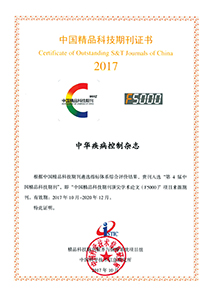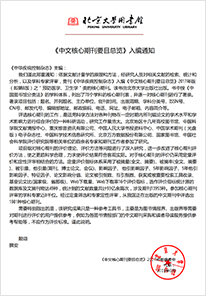2024 Vol. 28, No. 9
Display Method:
2024, 28(9): 999-1004.
doi: 10.16462/j.cnki.zhjbkz.2024.09.002
Abstract:
2024, 28(9): 1005-1009.
doi: 10.16462/j.cnki.zhjbkz.2024.09.003
Abstract:
2024, 28(9): 1015-1022.
doi: 10.16462/j.cnki.zhjbkz.2024.09.005
Abstract:
2024, 28(9): 1023-1029.
doi: 10.16462/j.cnki.zhjbkz.2024.09.006
Abstract:
2024, 28(9): 1030-1036.
doi: 10.16462/j.cnki.zhjbkz.2024.09.007
Abstract:
2024, 28(9): 1037-1042.
doi: 10.16462/j.cnki.zhjbkz.2024.09.008
Abstract:
2024, 28(9): 1043-1052.
doi: 10.16462/j.cnki.zhjbkz.2024.09.009
Abstract:
2024, 28(9): 1053-1060.
doi: 10.16462/j.cnki.zhjbkz.2024.09.010
Abstract:
2024, 28(9): 1061-1068.
doi: 10.16462/j.cnki.zhjbkz.2024.09.011
Abstract:
2024, 28(9): 1069-1074.
doi: 10.16462/j.cnki.zhjbkz.2024.09.012
Abstract:
2024, 28(9): 1075-1082.
doi: 10.16462/j.cnki.zhjbkz.2024.09.013
Abstract:
2024, 28(9): 1083-1089.
doi: 10.16462/j.cnki.zhjbkz.2024.09.014
Abstract:
2024, 28(9): 1090-1095.
doi: 10.16462/j.cnki.zhjbkz.2024.09.015
Abstract:
2024, 28(9): 1096-1103.
doi: 10.16462/j.cnki.zhjbkz.2024.09.016
Abstract:
2024, 28(9): 1104-1111.
doi: 10.16462/j.cnki.zhjbkz.2024.09.017
Abstract:
2024, 28(9): 1112-1116.
doi: 10.16462/j.cnki.zhjbkz.2024.09.018
Abstract:


 Email alert
Email alert RSS
RSS Abstract
Abstract HTML
HTML PDF
PDF





